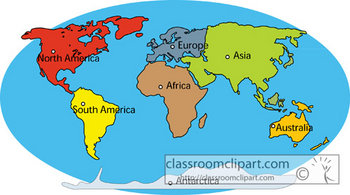Continental drift
|
|
The concept of continental drift was first proposed by Alfred Wegener. In 1912 he noticed that the shapes of continents on either side of the Atlantic Ocean seem to fit together (for example, Africa and South America). Francis Bacon, Antonio Snider-Pellegrini, Benjamin Franklin, and others had noted much the same thing earlier. The similarity of southern continent fossil faunas and some geological formations had led a relatively small number of Southern hemisphere geologists to conjecture as early as 1900 that all the continents had once been joined into a supercontinent known as Pangaea. The concept was initially ridiculed by most geologists, who felt that an explanation of how a continent drifted was a prerequisite and that the lack of one made the idea of drifting continents wholly unreasonable. The theory received support through the controversial years from South African geologist Alexander Du Toit as well as from Arthur Holmes. The idea of continental drift did not become widely accepted as theory until the 1950s in Europe. By the 1960s, geological research conducted by Robert Dietz, Bruce Heezen, and Harry Hess along with a rekindling of the theory including a mechanism by J. Tuzo Wilson led to acceptance among North American geologists.
The hypothesis of continental drift became part of the larger theory of plate tectonics. This article deals mainly with the historical development of the continental drift hypothesis before 1950. See: plate tectonics for information on current ideas underlying concepts of continental drift.
Various Data
South America and Africa are moving apart at 3 cm per year, due to the seafloor spreading along the Mid-Atlantic Ridge. This is comparable to the growth speed of a fingernail.
Evidence for continental drift
Main article: Plate tectonics
Evidence for continental drift is now extensive, in the form of plant and animal fossils of the same age found around different continent shores, suggesting that these shores were once joined. For example the fossils of the freshwater crocodile found in Brazil and South Africa. Another illustrative example is the discovery of fossils of the aquatic reptile Lystrosaurus from rocks of the same age from locations in South America, Africa, and Antarctica. There is also living evidence - the same animals being found on two continents. An example of this is a particular earthworm found in South America and South Africa.
The complementary shapes of the facing sides of South America and Africa is obvious, but is a temporary coincidence. In millions of years, seafloor spreading, continental drift, and other forces of tectonophysics will further separate and rotate those two continents. It was this temporary feature which inspired Alfred Wegener to study what he defined as continental drift.
The debate over continental drift
Before geophysical evidence started accumulating after World War II, the idea of continental drift caused sharp disagreement among geologists. On November 15, 1926, the American Association of Petroleum Geologists (AAPG) held a symposium at which the continental drift hypothesis was vigorously debated. The resulting papers were published in 1928 under the title Theory of continental drift. Wegener himself contributed a paper to this volume.
One of the main problems with Wegener's theory was that he believed that the continents "plowed" through the rocks of the ocean basins. Most geologists did not believe that this could be possible. Plate tectonics, a modern update of the old ideas of Wegener about "plowing" continents, accommodates continental motion through the mechanism of seafloor spreading. New rock is created by volcanism at mid-ocean ridges and returned to the Earth's mantle at ocean trenches. Remarkably, in the 1928 AAPG volume, G. A. F. Molengraaf of the Delft Institute (now University) of Technology proposed a recognizable form of seafloor spreading in order to account for the opening of the Atlantic Ocean as well as the East Africa Rift. Confirmation of this hypothesis would have to wait for further evidence.

